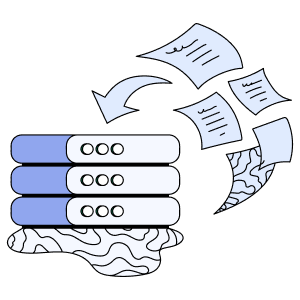Phunware

How Phunware used Petavue to assess over 500k contacts and find new growth opportunities

Over time, Phunware’s HubSpot database ballooned to more than 500,000 contacts and 130,000 organizations. It became a maze. Campaigns overlapped, automations conflicted, and the team spent more time managing data than using it. Reports slowed down, lead scores stopped making sense, and every quarter began with the same question: Can we even trust our data?
But this wasn’t just an operational mess; it was a strategic blind spot.
Hidden inside that massive CRM were warm prospects, dormant deals, and past customers who still perfectly fit Phunware’s ICP. However, the inability to make sense of it and find those ICP was almost impossible.
That’s when Petavue stepped in. By reconstructing understanding across fifteen years of disconnected data, Petavue transformed static records into a living intelligence system the Phunware team could finally act on.
- Turned 15 years of legacy HubSpot data into actionable pipeline intelligence.
- Aligned Sales and Marketing around verified ICPs.
- Delivered measurable revenue traction from reactivated healthcare and enterprise accounts within the first campaign cycle.

At Phunware, Peter and his team had inherited a complex HubSpot environment shaped by years of product launches and enterprise campaigns across hospitals, airports, and stadiums. Each initiative added layers of data — contacts from RFPs, pilot projects, and marketing partnerships, that made it nearly impossible to see where genuine pipeline potential existed.
Like many fast-growing tech firms balancing B2B and enterprise sales motions, Phunware’s data told too many stories at once.
- 15 years of campaigns had layered overlapping fields, outdated workflows, and unused lists.
- Leadership and process changes left inconsistent ICP definitions and scoring models.
- Manual cleanup wasn’t feasible - “no human could have gone into that and started unlocking value.”
1. Data Unification
- Petavue connected directly to Phunware’s HubSpot database with 500K+ contacts and 130K+ organizations.
- Consolidated fragmented lists, imports, and automations into one governed layer.
- Resolved duplicates, restored missing fields, and standardized key terms like engaged contact and active opportunity.
- Created a single, reliable foundation for all subsequent analysis.
2. Data Assessment
- Audited fifteen years of historical data for accuracy and engagement health.
- Flagged inactive segments, outdated scoring logic, and missing values.
- Verified every contact, campaign, and activity field for consistency.
- Gave visibility into what could be trusted and what needed repair.
3. Verifiable Reporting
- Enabled the team to ask direct, business-focussed questions on their data in natural language.
- Example: “Which contacts fit our current ICP and show recent engagement worth pursuing?”
- Petavue’s AI translated each question into an auditable analysis plan before running it.
4. Actionable Insights Delivery
- Combined behavioral signals (reply depth, call frequency, web sessions) to produce a verified opportunity list.
- Sales used it to focus outreach on active prospects; marketing refined campaigns based on real data.
- Every recommendation was traceable, building lasting trust in the insights.
1. Clear ICP Visibility
- Petavue revealed which engagement patterns consistently led to closed-won deals.
- High-value signals included repeat visits to healthcare case studies, extended time on demo pages, and rapid responses to pricing inquiries.
- These insights reshaped Phunware’s ICP and guided new budget priorities for the next quarter.


2. Faster Time to Value
- Petavue identified ready-to-engage accounts hidden inside Phunware’s 500K-contact HubSpot instance.
- The team launched a pilot focused on healthcare systems exploring indoor navigation tools, testing insights directly in the market.
- Early wins gave Sales immediate proof that the data was actionable, not just clean.
3. Sales–Marketing Alignment
- Marketing used Petavue’s findings to craft A/B messages around visitor-experience ROI.
- Sales tracked which executives re-engaged after seeing those campaigns, closing the feedback loop in real time.
- Daily huddles shifted from arguing over metrics to reviewing verified outreach lists and campaign results.

For Phunware, the real takeaway wasn’t just a report or a metric. It was how Phunware’s go-to-market process evolved week after week.
Before Petavue, every campaign began with uncertainty: who to target, what to test, how to justify the spend. Afterward, each week started with a clear plan and ended with verified outcomes.
The impact was steady and measurable - greater focus, stronger alignment, and more opportunities of growth.


